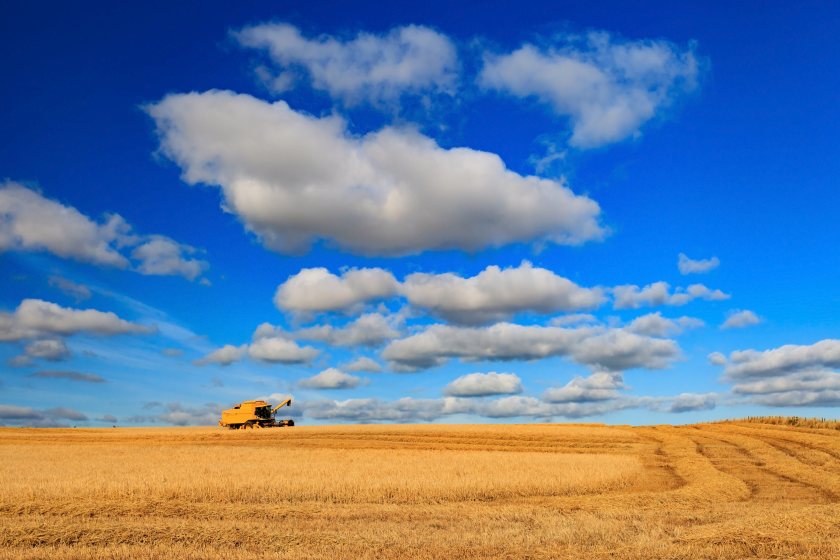
While the latest Defra figures reporting a boost in overall farm profitability are welcome, they mask the significant volatility faced by the sector and the highly varied picture across farming enterprises, the NFU has warned.
Defra’s new Total Income from Farming figures show UK farm profits rose by £1.6bn in 2024 compared to 2023, bringing the overall total to £7.7bn. The sector’s contribution to the UK economy rose by 12.8%.
However, income figures for 2023 were revised down by over £1 billion, after it emerged fertiliser costs were 72% higher than previously thought.
As a result, the increase in 2024 comes from a much lower base than originally reported.
NFU President Tom Bradshaw stressed the modest gains should be viewed in context: “Set against historically low incomes, these modest gains are a step forward, but they are fragile."
The latest uplift in profitability appears largely driven by strong performance in beef and sheep, with outputs rising by 9% and 13% respectively.
However, the NFU noted this was a long-overdue correction after years of unsustainable returns and was vital to enable reinvestment.
In contrast, cereals remained on a downward trajectory, with outputs falling by 22% compared to 2023.
This sharp decline reflects the impact of challenging weather during planting for the 2024 harvest, alongside falling global prices — both of which have severely affected arable farmers’ profitability.
“The last few years have shown just how volatile the farming environment can be,” Mr Bradshaw said. “The new figures hide this volatility, as well as the variable returns across different farming sectors.”
He added that the data is shaped by “a complex mix of markets, weather and 2023 having the highest input costs in decades because of the tragic situation in Ukraine.”
“These figures once again show just how exposed farmers across the four countries of the UK are to these pressures,” the NFU president continued.
“Arable farmers have been hit particularly hard due to falling global prices and extreme weather, and while some sectors like beef and sheep have recovered slightly, it comes after years of unsustainable returns."
There was also a recovery in dairy and egg outputs in 2024. Dairy revenues increased by 6%, following a difficult 2023, while egg revenues soared by 35%, buoyed by strong consumer demand.
Meanwhile, the total cost of farm inputs fell by 5% year-on-year, thanks in large part to a 26% drop in fertiliser costs and a 7% fall in animal feed expenditure. However, Mr Bradshaw warned that costs remain elevated.
“The decline in input costs is positive, but they are still far above where they were before the global geopolitical shocks we have seen in recent years,” he said.
“This is why the upcoming spending review is so important. Farmers need certainty to plan and invest, and a long-term UK agriculture budget of £5.6bn would help underpin nature-friendly food production.”
“Farmers are resilient and adaptable, but they cannot shoulder all the risk on their own. This is a clear signal that government must step up and put food security at the heart of its priorities.”
According to Defra, wheat remained the largest contributor to total crop output, valued at £2,161m — but this figure represents a £796 m (26.9%) decline on 2023.
Poor weather during winter and spring planting severely affected the 2024 wheat crop, limiting yields and impacting quality. Milling wheat prices fell by 9.3% compared with 2023, following continued easing of global prices.
Barley also saw a significant value decline despite an increase in production, while oilseed rape experienced the largest percentage decrease — the result of a 25% reduction in planted area, pest pressures, and strong global competition from soybeans.
Milk was the largest contributor to livestock output, with prices rebounding in spring and summer on tightening global supply — boosting production later in the year.
Beef output rose by 9.3% on 2023, thanks to rising deadweight prices for prime cattle. This reflected both strong consumer demand and expectations of tighter supplies in 2025.
Animal feed remained the largest input cost, valued at £4,415 million. Fertiliser costs fell sharply, down by 26.3%, as gas prices eased and farmers returned to more typical purchasing patterns after the volatility of 2022 and 2023.
Defra noted a general downward trend across most input costs, largely driven by reductions in high energy and fuel prices that had previously spiked due to global instability.
Nonetheless, the NFU cautioned that farming incomes remain precarious and heavily exposed to global market fluctuations.
